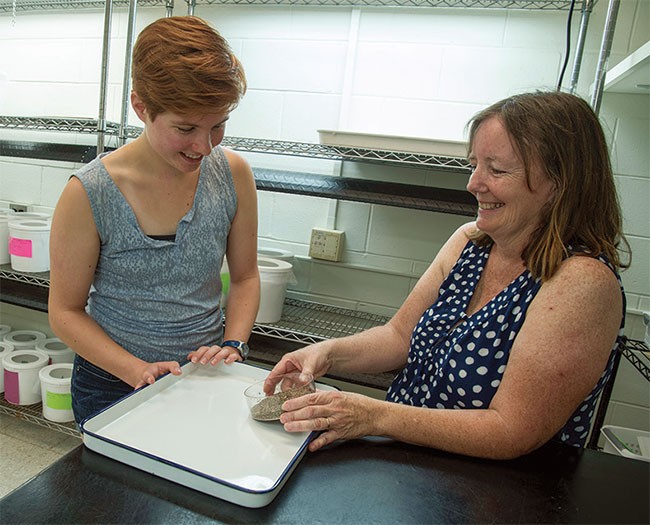A new tool has been approved in the fight to control invasive pale and black swallowworts, and it’s a good sign for monarch butterflies. The natural enemy of the swallowworts is a Hypena moth whose caterpillars feed voraciously on the herbaceous vines. After more than 10 years of “specificity testing” in a biocontrol laboratory at the University of Rhode Island to make sure the moth doesn’t eat anything else, scientists have received a USDA permit to release them into the wild. It was approved for release in Canada in 2013.
According to entomologist Lisa Tewksbury, who conducted the testing, the two species of swallowwort were introduced to the Northeast from Europe in the late 1800s as ornamental plants. They also may have been favored for their medicinal value.
The plants have become pests throughout the region, especially in pastures, where they outcompete native grasses. Animals avoid eating them because they are toxic, and farmers worry that if it gets into their hay, their livestock could become sick. Swallowworts have also been harmful to Christmas tree farms and have taken over forested areas.
Because swallowwort is closely related to milkweed, which serves as the host plant for monarch caterpillars, the butterflies often mistakenly lay their eggs on swallowwort leaves. When the eggs hatch and the tiny caterpillars begin to feed on the swallowwort, the monarch caterpillars die.

Last summer, about 2,000 Hypena moth caterpillars were released at a site in Massachusetts, and another 1,500 were released in Rhode Island to test their success at controlling the vine.
“The first aspect of the release is experimental,” said Tewksbury, “to see how well it does – does it establish, does it overwinter, is it having an impact on the plants? If it seems to be working in experimental situations, we’ll engage in other releases.
“In southern Ontario, it’s doing well at one of two locations where it was released,” she added. “But it’s going slow. They have huge populations of swallowwort, so it will be hard for the insects to make headway.”
The caterpillars are well camouflaged, which Tewksbury said makes it difficult to find them to observe how many have survived. Monitoring their success involves recording how much damage they have done to the plants.
“The adult moths are strong fliers, so we hope they move around elsewhere to other populations of swallowwort,” she said.
Now that the specificity testing is complete, Tewksbury will be turning over the responsibility for raising the moths in captivity to other laboratories. Assuming that the experimental phase of the release is successful, landowners and communities seeking to release the moths on their properties will be able to obtain the insects directly from the labs.
“The goal of biological control is to reacquaint new pests with their historical natural enemies,” Tewksbury concluded. “This restores the evolutionary relationship of an insect with its host plant, which we hope will provide long-term management of the invasive plant species.”


